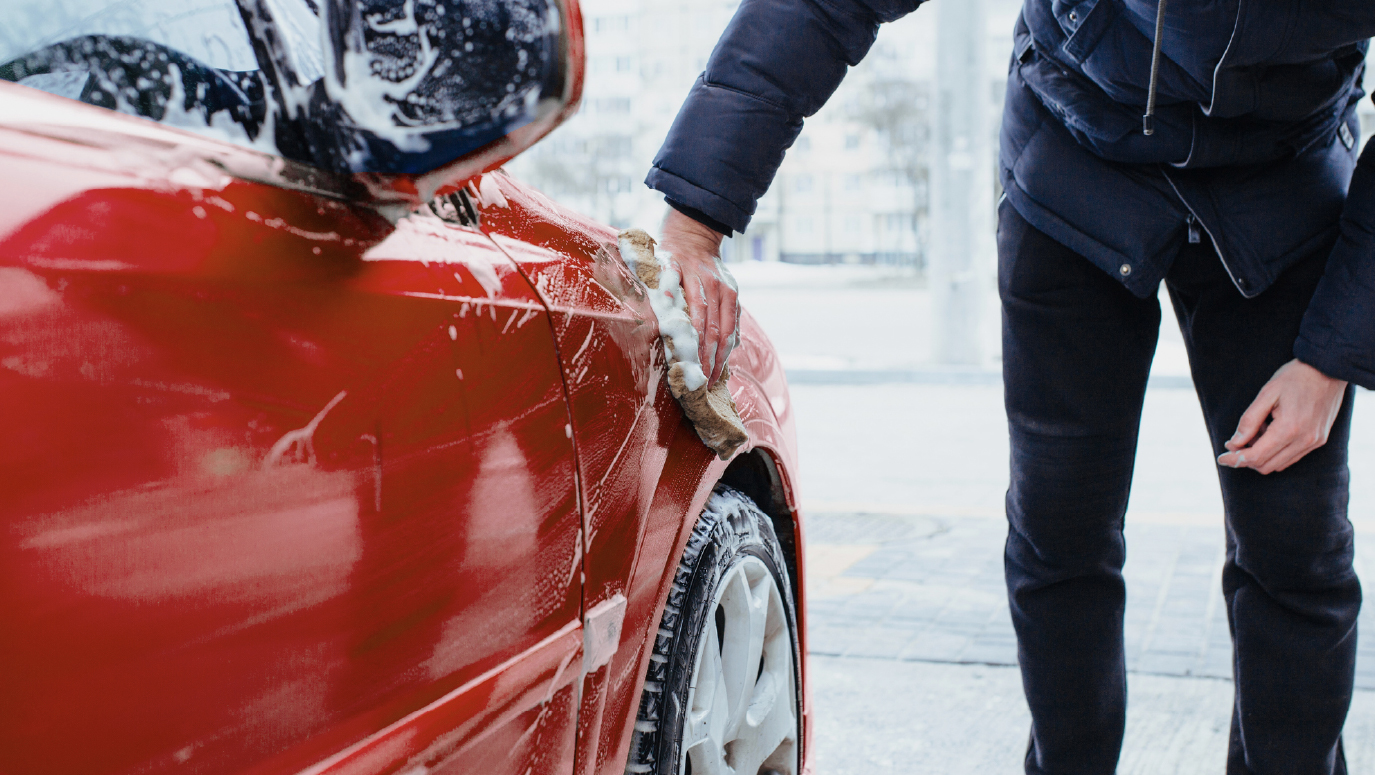Harsh winter weather has the potential to seriously damage our homes and gardens, but how many of us spare a thought for our poor cars as they loyally battle their way through the grim conditions?
Paintwork rarely has a tougher time than in the winter. Wet leaves, rain, debris on the roads, ice – they’re all enemies of car paintwork. And then there’s the worst of the lot: salt.
If you want to keep your car looking its best, it’s well worth taking the time to protect your paintwork before winter weather strikes. Here's how:
Start with washing your car
It may be tricky to find a time when it's not raining, but as soon as you get the chance, give your car a proper wash.
Protecting your car’s bodywork from winter weather starts with a good old-fashioned bucket and sponge – but try to get this done before the temperature plummets and your fingers go numb.
Rinse the car down, ideally using a pressure washer, then mix a bucket of warm water with car shampoo and fill a second bucket with clean water. Start at the top and work your way down. As you wash, rinse the sponge or mitt in the clean water. Clean the wheels last, before rinsing everything thoroughly.
Consider eco-friendly products
Many traditional car shampoos contain harsh chemicals that harm aquatic life when they’re washed down the drain. Thankfully, these days there are more eco-friendly alternatives that will clean your car just as effectively, while being kinder to the planet.
Look for shampoos that are biodegradable, pH-neutral and made in the UK to help reduce your carbon footprint. Check out the pros and cons to get the right shampoo for your motor.
Remove tar and sap using a clay bar
To remove the most stubborn stains on paintwork, tackle them using a clay bar. This is pretty much what it sounds like – a lump of clay-like material.
When you run this over paint, often with water or a special lubricant, it harmlessly lifts away nasty deposits from the paint. It’s a surprisingly easy job and will leave the surface of your car feeling mirror smooth.
Touch up any chips
Now is the time to touch up any chips in the paintwork.
A franchised car dealer will be able to sell you a special touch-up paint kit, which will be matched to your car’s colour and is easy to apply. By sealing in the metalwork that’s been exposed by chips, you’ll prevent corrosion from happening during tricky weather.
Mix elbow grease and polish for great results
Nearly there...
Polishing paintwork will remove things like mucky prints or swirl marks; those tiny circular scratches in the clear layer that protects paint. We won’t lie – it’s a bit of a workout if you do it properly. But it’s well worth the effort as it brings out the best in your car’s bodywork.
Apply a wheel wax to give your wheels a chance of emerging from winter with their gleam intact.
Apply a paint sealant or wax
Traditional wax or more modern synthetic paint sealants will form a protective, glossy barrier that stops nasty wintry things from affecting your paintwork.
There's good and bad news with this one.
The bad news is that it requires a fair bit of elbow grease, again. But the good news? It’s definitely less of a workout than polishing.
It's also a hugely important step in getting protected before winter arrives.
And, if you’re looking to protect your paintwork in an eco-friendly way, there are plenty of plant-based or biodegradable waxes to choose from. They offer the same great protection and shine without the use of harsh solvents. Everyone’s a winner.
Looking for lasting protection?
Traditional waxes and sealants are great, but if you’re looking for longer-lasting protection, you might consider upgrading to ceramic or graphene coatings.
These advanced products chemically bond to your car’s paintwork, offering durable protection against UV rays, road salt and chemicals.
- Ceramic coatings can last two to five years, depending on the product and application method. They create a hydrophobic surface that repels water and dirt, making your car easier to clean.
- Graphene coatings are a newer option, claiming to last longer than ceramic coatings (5-7 years). They offer enhanced resistance to UV damage and chemical etching, with even better heat dissipation than ceramic coatings.
You can apply both coatings yourself, with graphene the easier, more user-friendly option. But for a more durable finish, a professional car detailer can do the job for you.
Don't forget alloy wheels
Your wheels will go through a lot during winter, so give them some extra attention.
Apply a wheel wax to help give them a fighting chance of emerging from another winter with their gleam intact.
And finally...
Don't let the way you drive spoil all that hard work.
A top tip is to maintain a much greater distance between yourself and the vehicle in front. This will give you more time to react to unexpected situations in poor weather, and prevents the front of your car being showered with debris that’s thrown up by the tyres of the car in front.
And for areas of your car that are most vulnerable to chips and scratches – like the front bumper, bonnet, and wing mirrors – Paint Protection Film (PPF) offers an extra layer of defence. This clear urethane film sticks directly to the paintwork and is virtually invisible once applied.
Although it will last for years, PPF is especially useful in winter, when grit and salt can take their toll. Many modern PPFs are ‘self-healing’ too, so you can fix minor scratches with heat exposure (or even sunlight).
For more advice on keeping safe on the roads when temperatures drop, read our guide on driving in winter weather.




